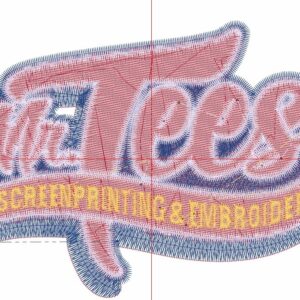Vector art files, raster art files and digitized art files are three different file types. Each is created in it’s own program and each has it’s own purpose. The three different types are not interchangeable files.
Vector Art vs Raster Art
The difference between vector and raster graphics is that raster graphics are composed of pixels, while vector graphics are composed of paths. A raster graphic, such as a gif or jpeg, is an array of pixels of various colors, which together form an image. A vector graphic, such as an .eps file or Adobe Illustrator file, is composed of paths, or lines, that are either straight or curved. The data file for a vector image contains the points where the paths start and end, how much the paths curve, and the colors that either border or fill the paths. Because vector graphics are not made of pixels, the images can be scaled to be very large without losing quality.
All vector art files are created in graphic arts programs such as Adobe Illustrator or CorelDraw and are necessary for screen printing or any other type of signage that will need to have the sizing adjusted to fit the item it is going on. Vector files are not the same as raster files, or what most people know as jpeg or jpg files, gif files, or png files. You can save vector files as raster files for use on the web.
Raster files are files that are made up of pixels. These files are often used on the internet since they don’t take up much space. Raster graphics become “blocky,” since each pixel increases in size as the image is made larger causing the edges to look jagged and the image to blur making it a poor candidate for screen printing. This is why logos and other designs are typically created in vector format because the quality will look the same on a business card as it will on a billboard. Because of this, we cannot take images from the internet and use them to print shirts. You cannot save a raster file as a vector file and convert it to a vector file.
Digitized Art vs Vector/Raster Art
Digitized files are files specifically for embroidery. The most common embroidery file is a DST file, but different machines will use different file types. Embroidery machines require formats which Illustrator does not export. The embroidery machine is dependent upon a file which plots coordinates, in correct sequence, for each stitch. It’s not just a simple matter of drawing an outline and then telling the machine to “fill it with stitches.” Because there are many kinds of stitch patterns, all of varying density, the code driving the machine has to explicitly tell the machine where to insert the needle for each stitch. What this means is that embroidery machines cannot read a vector or raster file since those files have no way of telling the embroidery machine where to place each individual stitch that will make up your embroidery art.
Converting vector art to a digitized file is a specialized process so we send that out to the experts to have that done. This guarantees the best stitch file we can get and that your shirts look great when we are done.
